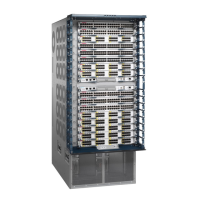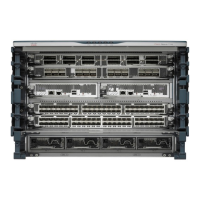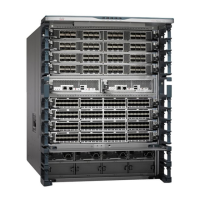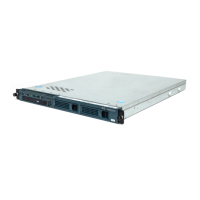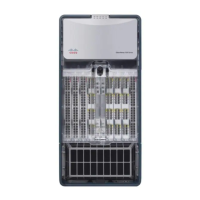2-76 Cisco 7000 Hardware Installation and Maintenance
Site Requirements
Table 2-7 IEEE Standard EIA/TIA-449 Transmission Speed Versus Distance
Note The recommended distance limits for EIA/TIA-449 shown in Table 2-7 are also valid for
V.35, X.21, and EIA-530.You can get good results at distances and rates far greater than these;
however, do so at your own risk. In common practice, EIA/TIA-449 and EIA-530 support 2-Mbps
rates, and V.35 supports 4-Mbps rates without any problems, but we do not recommend exceeding
published data rates and transmission distances.
SONET Connections for the AIP
The SONET specification for fiber-optic transmission defines two types of fiber: single mode and
multimode. Modes can be thought of as bundles of light rays entering the fiber at a particular angle.
Single-mode fiber allows only one mode of light to propagate through the fiber, while multimode
fiber allows multiple modes of light to propagate through the fiber. As multiple modes of light
propagate through the fiber, they travel different distances depending on the entry angles. This
causes them to arrive at the destination at different times (a phenomenon called modal dispersion).
As a result, single-mode fiber is capable of higher bandwidth and greater cable run distances than
multimode fiber. The maximum distances for single-mode and multimode transmissions, as defined
by SONET, are in Table 2-8. If the distance between two connected stations is greater than these
maximum distances, significant signal loss can result, making transmission unreliable.
Table 2-8 SONET Maximum Fiber-Optic Transmission Distances
Power Budget
To design an efficient optical data link, evaluate the power budget. The power budget is the amount
of light available to overcome attenuation in the optical link and to exceed the minimum power that
the receiver requires to operate within its specifications. Proper operation of an optical data link
depends on modulated light reaching the receiver with enough power to be correctly demodulated.
Attenuation, caused by the passive media components (cables, cable splices, and connectors), is
common to both multimode and single-mode transmission.
Rate (bps) Distance (Feet) Distance (Meters)
2400 4100 1250
4800 2050 625
9600 1025 312
19200 513 156
38400 256 78
56000 102 31
1544000 (T1) 50 15
Transceiver Type Maximum Distance between Stations
1
1. This table gives typical results. You should use the power budget calculations
to determine the actual distances.
Single-mode Up to 9 miles (14.8 kilometers)
Multimode Up to 1.5 miles (2.4 kilometers)

